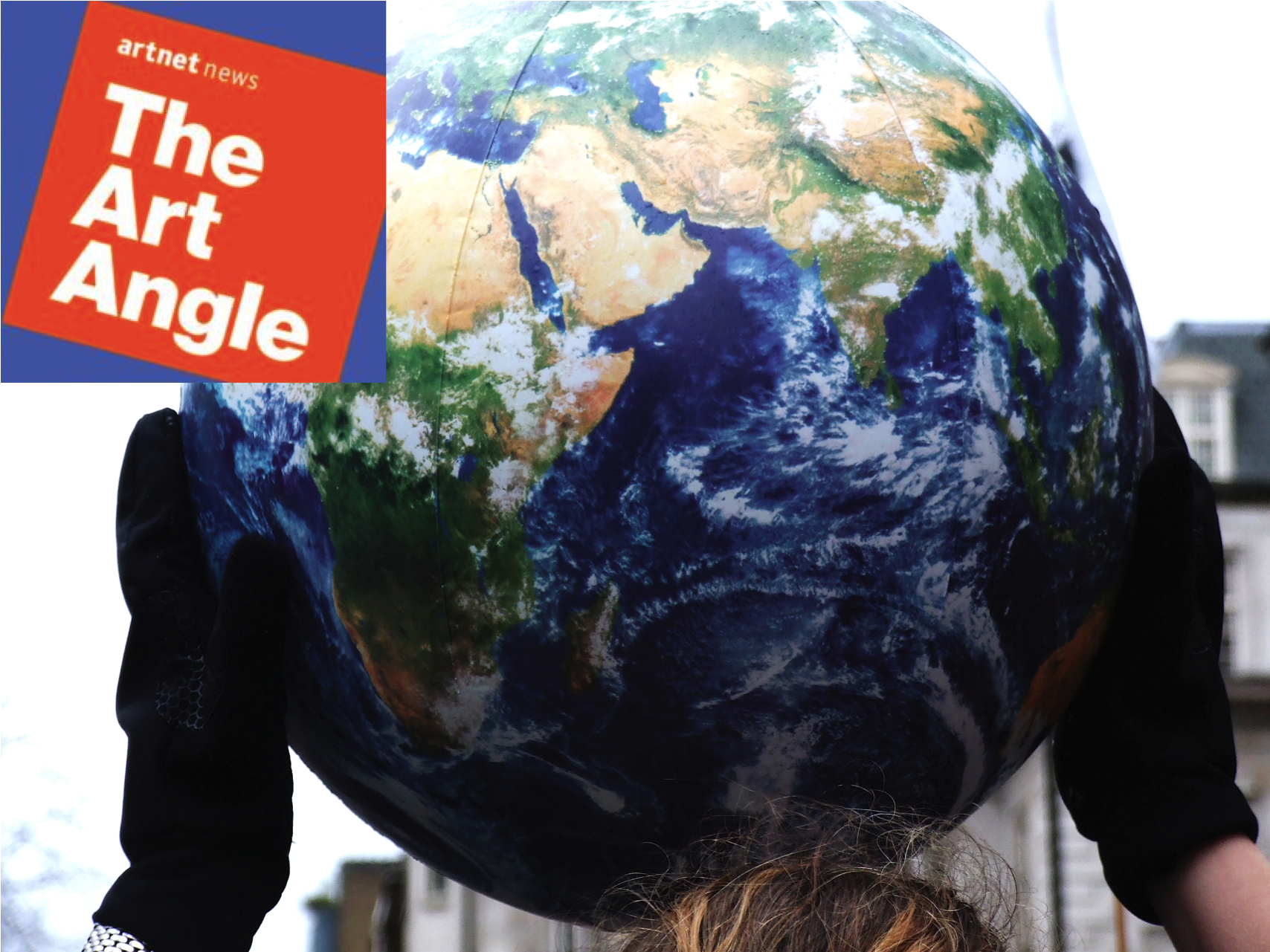
Welcome to the Art Angle, a podcast from Artnet News that delves into the places where the art world meets the real world, bringing each week’s biggest story down to earth. Join host Andrew Goldstein every week for an in-depth look at what matters most in museums, the art market, and much more with input from our own writers and editors as well as artists, curators, and other top experts in the field.
For our latest episode, team Art Angle traveled to Art Basel Miami Beach to examine a much thornier and more urgent issue than the glamorous trade show’s business: the art world’s impact on Mother Earth. From thousands of deep-pocketed collectors flying in to south Florida for the week’s festivities, to the hundreds of black cars and Ubers ferrying attendees from event to event, to the (literal) tons of artworks shipped by air, land, and sea to Miami’s convention centers for a scant five days of exposure, the ecologically punishing realities of the art fair demand that we take a hard look at their sustainability for the planet—and ask bigger questions about the art world’s responsibility to address the climate crisis.
The need for action only intensifies in light of the fact that Art Basel Miami Beach is just one of nearly 300 art fairs held around the globe every year, and that many of these events take place in the coastal destinations most imperiled by climate change. Art Basel Miami Beach is held just a few blocks from the waterfront where the sea level has tripled over the past decade, causing the city to ship in imported sand to keep its coastline from disappearing entirely. And this is just a prelude of things to come in other crucial art hubs like Hong Kong, London, New York, and Los Angeles.
Given the art world’s cherished progressive reputation, how long can it justify the extraordinarily outsize habits of its fairs, institutions, and jet-setting elites? In what ways could the various players in the global art market minimize the damage they do to Mother Nature? And how are artists, as well as climate-activist groups like Extinction Rebellion, foregrounding the need for change in the cultural sphere? In the middle of Miami Art Week, Artnet News’s European editor Kate Brown joined Andrew Goldstein by phone from Germany to tackle these urgent questions, and more.
Listen below and subscribe to The Art Angle on Apple Podcasts, Spotify, SoundCloud, or wherever you get your podcasts. (Or catch up on past episodes here on Artnet News.)
Listen to Other Episodes:
The Art Angle Podcast: Art Basel Rules the Art Market. Is That a Good Thing for Art?
The Art Angle Podcast: How Yayoi Kusama Became an Unlikely Pop-Culture Phenomenon
The Art Angle Podcast: Who Is Sotheby’s Mysterious New Owner, and What Does He Want?
The Art Angle Podcast: Hans Neuendorf on 30 Years of Artnet, and What Comes Next
The Art Angle Podcast: Anish Kapoor on ‘Radical’ Art, China, and the Magic Paint Wars
The Art Angle Podcast: Why Leonardo da Vinci at the Louvre Matters
Introducing the Art Angle Podcast: How MoMA Remade Itself for the Trump Era